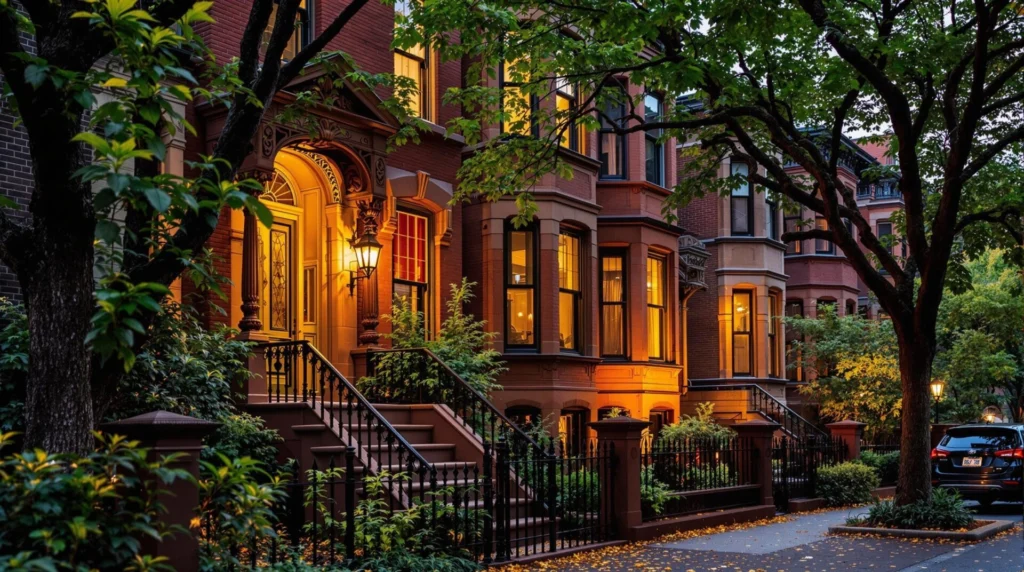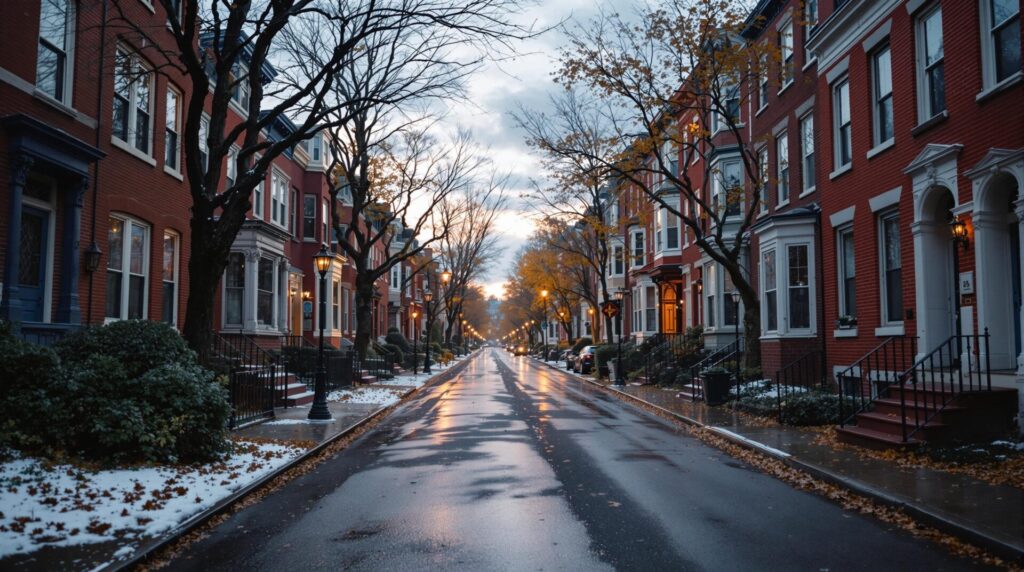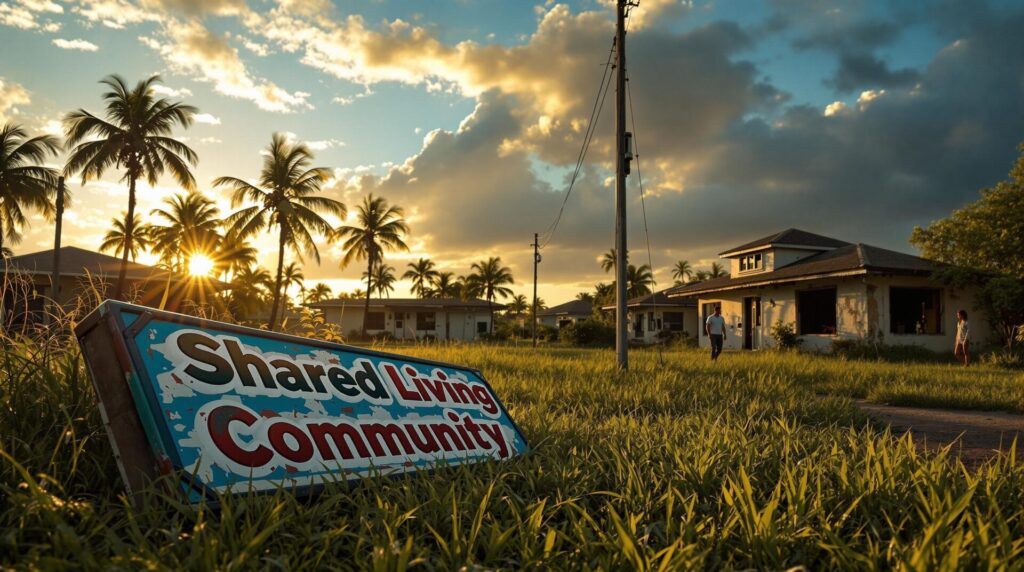Introduction: Embracing the Transformation of Industrial Spaces
Transforming industrial spaces into residential communities is an exciting trend that preserves history and promotes sustainability.
You’ll find these transformations blend old charm with modern amenities, using features like exposed brick and large windows to create unique, inviting homes.
This reuse not only saves on construction costs but also revitalizes neighborhoods, fostering vibrant, inclusive communities.
However, it can be challenging, requiring special permits and careful planning to handle structural issues and community concerns.
Examples like New York’s High Line and Portland’s Pearl District show how successful these projects can be.
Want to discover more fascinating details on this trend?
Keep reading.
Historical Significance and Preservation
Many industrial spaces hold significant historical value, serving as reminders of a community’s industrial past.
When you step into these areas, you can almost feel the echoes of bustling factories and hardworking individuals who shaped the community.
Preserving these spaces isn’t just about saving old buildings; it’s about heritage conservation.
By maintaining these historical landmarks, you honor the past while paving the way for future generations to understand and appreciate where they come from.
Community engagement plays an important role in this process. When residents get involved in preserving industrial spaces, they strengthen their connection to the community.
You can participate in local heritage conservation efforts by attending town meetings, volunteering for cleanup days, or supporting local initiatives aimed at restoring and maintaining these areas.
It’s a collective effort that brings people together, fostering a sense of pride and belonging.
You might wonder why it is vital to preserve these spaces. The answer lies in their ability to tell stories—stories of resilience, innovation, and growth.
By conserving industrial spaces, you guarantee that these narratives continue to inspire and educate, bridging the gap between past and present.
Benefits of Adaptive Reuse
Transforming old industrial spaces into vibrant residential communities offers numerous benefits, both practical and cultural.
First, adaptive reuse promotes sustainability benefits by repurposing existing structures, reducing the need for new materials, and minimizing waste. You’re not only preserving the environment but also saving on costs associated with new construction.
Moreover, these projects often foster community engagement.
By transforming old factories or warehouses into living spaces, you create a unique communal atmosphere that encourages residents to connect with their surroundings and each other.
This sense of belonging enhances the social fabric of the area.
| Benefit | Explanation |
|---|---|
| Sustainability | Reduces waste and conserves resources by reusing existing structures. |
| Economic Efficiency | Lowers construction costs and can boost local economies through new investments. |
| Cultural Preservation | Maintains historical significance and integrates it into modern living spaces. |
| Community Engagement | Encourages a sense of community and belonging among residents. |
You’ll find that adaptive reuse projects can also attract diverse groups of people, fostering a more inclusive community.
By blending the old with the new, you’re not just creating homes; you’re building vibrant, sustainable, and engaged neighborhoods.
Design and Architectural Features
Embracing the potential of industrial spaces, architects and designers craft unique and functional living environments.
They thoughtfully blend the old with the new, preserving the character of buildings while introducing modern amenities.
One key aspect is the use of sustainable materials, which not only reduces environmental impact but also creates healthier living spaces.
By repurposing existing structures, they minimize waste and utilize materials that are often locally sourced, adding a touch of authenticity and reducing carbon footprints.
Community engagement is another essential element in these transformations.
Designers involve future residents and local stakeholders in the planning process, ensuring the new spaces meet the community’s needs.
This collaborative approach fosters a sense of ownership and connection among residents, making the shift from industrial to residential seamless and meaningful.
You’ll notice features like exposed brick walls, high ceilings, and large windows that retain the industrial aesthetic while maximizing natural light and ventilation.
Open floor plans encourage social interaction and flexibility in how spaces are used. Incorporating green spaces, communal areas, and amenities like shared gardens or rooftop terraces further promotes a sense of community, making these transformed spaces not just places to live, but places to thrive.
Challenges in Transformation
While the transformation of industrial spaces into residential communities brings exciting design opportunities, it also presents a unique set of challenges. You’ll find that dealing with zoning regulations is often one of the first hurdles.
These rules, which dictate how land can be used, might not initially allow for residential development.
You’ll need to navigate the bureaucracy, often requiring special permits or zoning changes, which can be time-consuming and complicated.
Community engagement is another critical factor. Residents in the surrounding areas might have concerns about increased traffic, noise, or changes to the neighborhood’s character.
It is crucial to involve them early in the process to address these worries and gain their support.
Holding town hall meetings, sending out surveys, and creating open forums for discussion can foster a sense of inclusion and transparency.
Moreover, the physical state of old industrial buildings can pose significant challenges. You’ll likely encounter structural issues, outdated utilities, or environmental hazards like asbestos.
Addressing these problems requires careful planning and can add substantial costs to your project. Despite these obstacles, with thoughtful preparation and community collaboration, transforming industrial spaces into vibrant residential areas is entirely achievable.
Success Stories and Examples
Numerous successful transformations of industrial spaces into residential communities show that such projects can indeed thrive.
These transformations aren’t just about converting old factories into living spaces; they’re about creating vibrant, sustainable communities where people want to live, work, and play.
Let’s look at some standout examples that highlight the power of community engagement and sustainable practices.
- The High Line, New York City: What was once an elevated railway track is now a beautiful park, surrounded by residential developments. This project is a demonstration of how community engagement can turn industrial relics into beloved public spaces.
- The Distillery District, Toronto: This area transformed from a historic distillery into a bustling neighborhood with shops, restaurants, and lofts. The preservation of original architecture paired with sustainable practices has made it a cultural and residential hotspot.
- Gas Works Park, Seattle: Once a gasification plant, this park now offers green spaces and stunning views. Its transformation emphasizes sustainable practices by repurposing industrial structures for community use.
- The Pearl District, Portland: This former warehouse district is now a thriving urban neighborhood. Community engagement played a key role in its development, resulting in a mix of residential, commercial, and cultural spaces.
These examples demonstrate that with thoughtful planning and a focus on sustainability, industrial spaces can be reimagined to benefit both residents and the environment.
Conclusion
Transforming industrial spaces into residential communities is more than just a trend; it’s a smart solution.
Did you know that adaptive reuse can reduce construction waste by up to 90%? That’s huge for our environment!
By preserving historical significance and embracing innovative design, we create vibrant, sustainable neighborhoods. Sure, there are challenges, but the success stories show it’s worth the effort.
So, let’s continue turning old factories into new homes, making our cities greener and more connected.





















